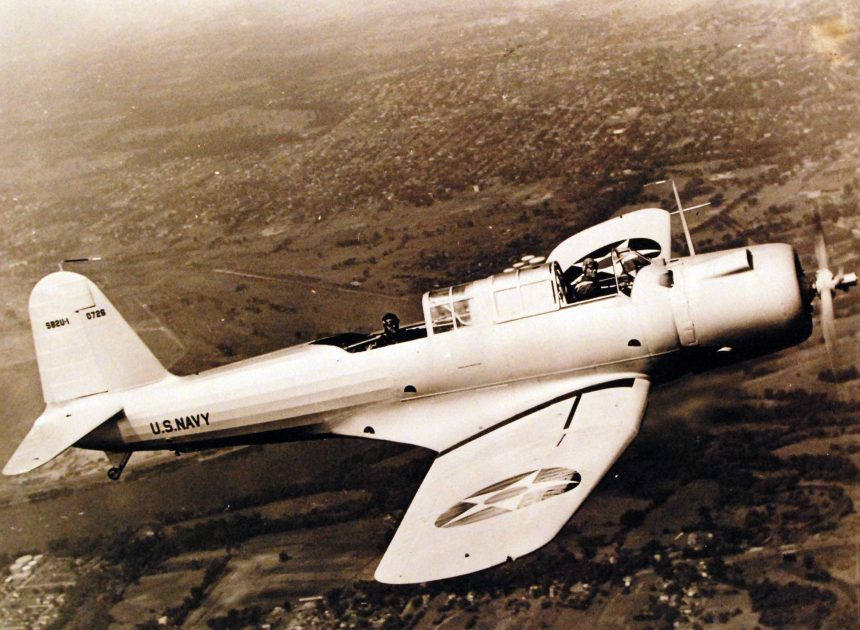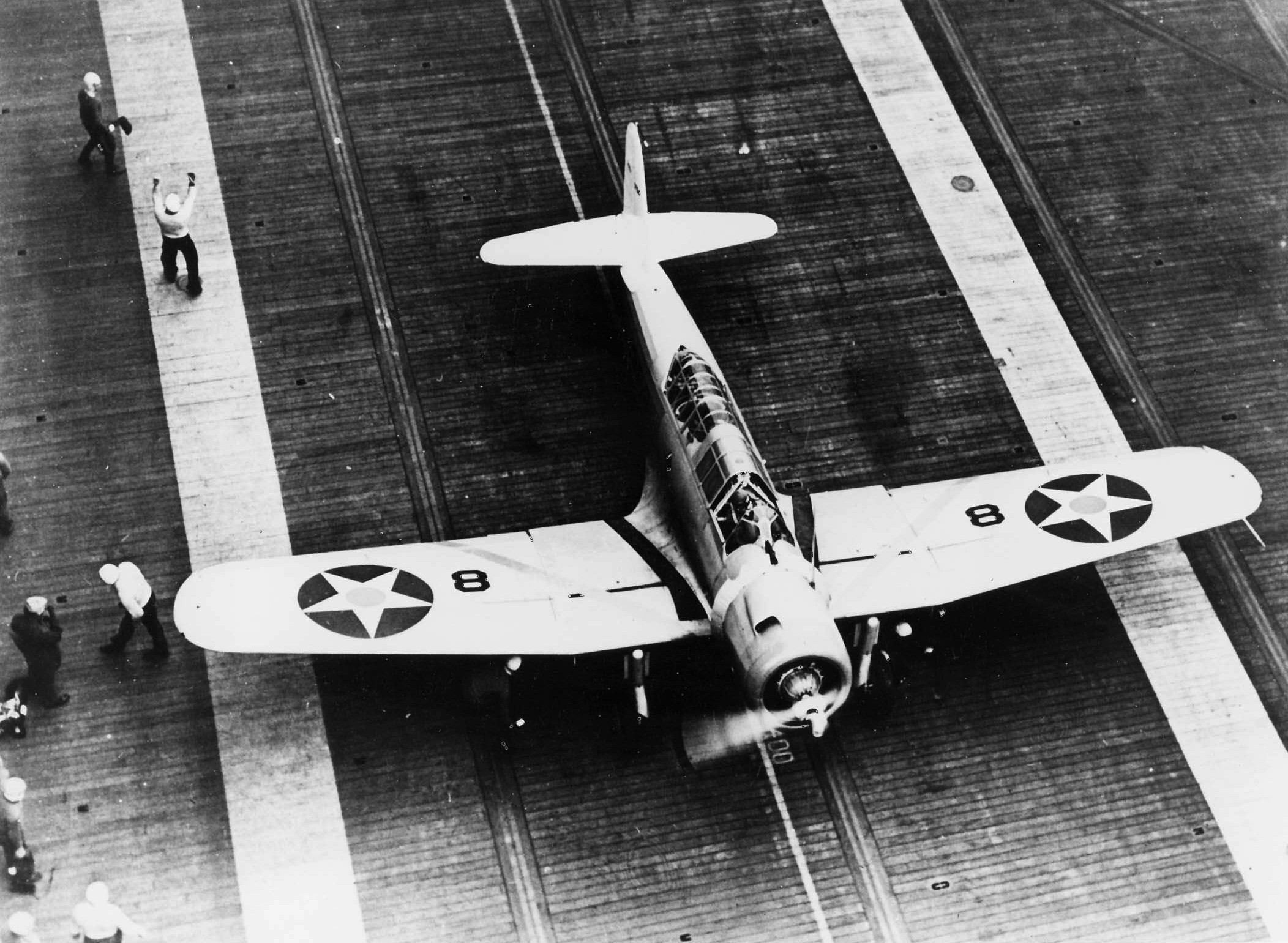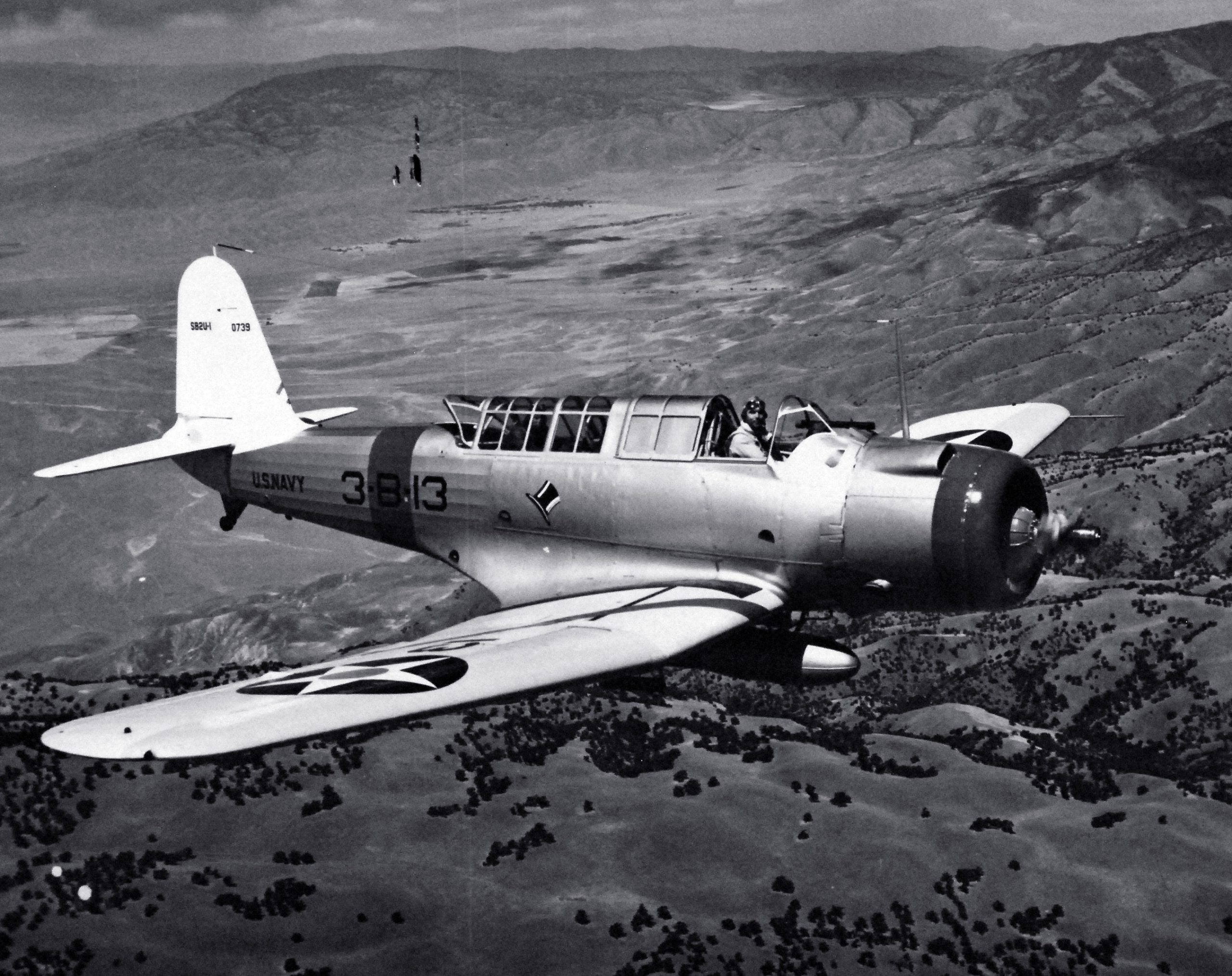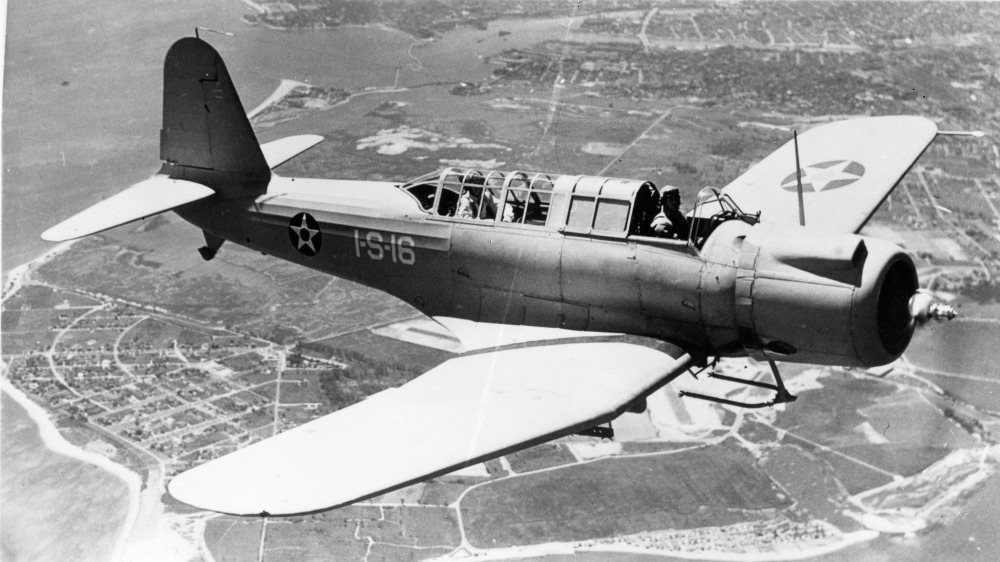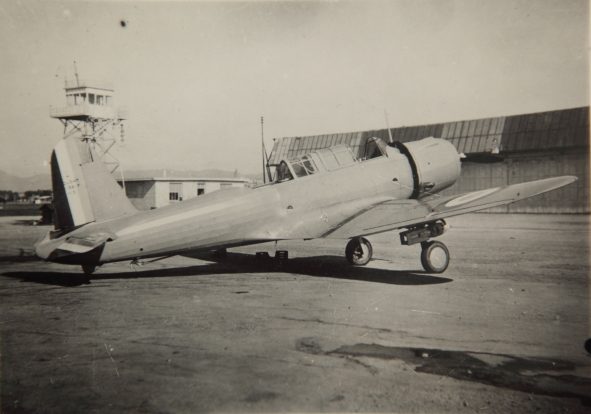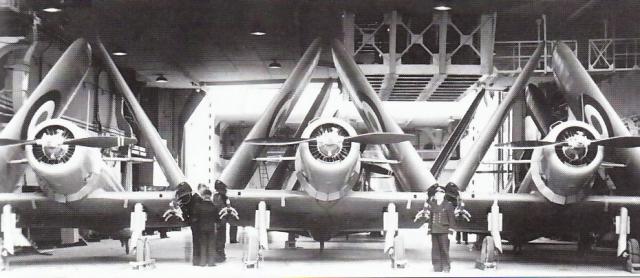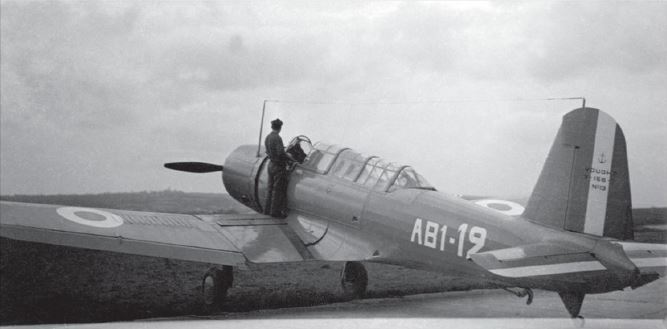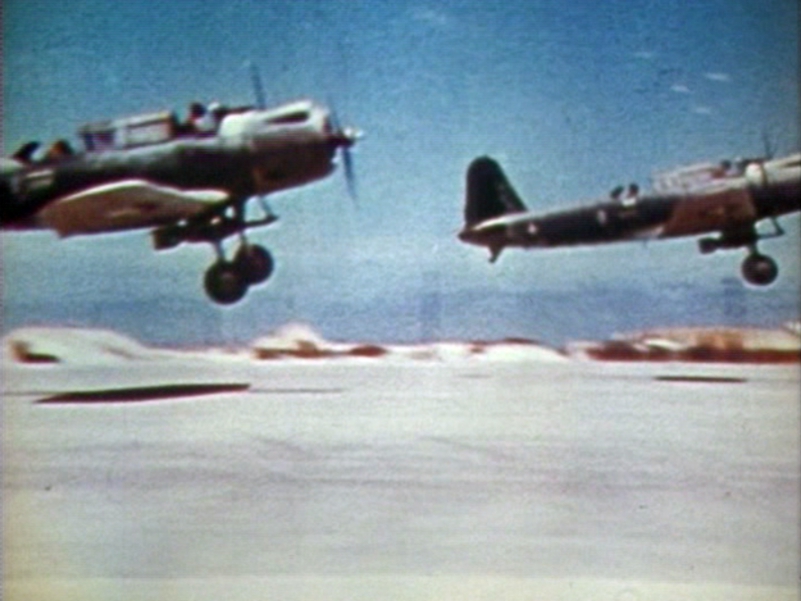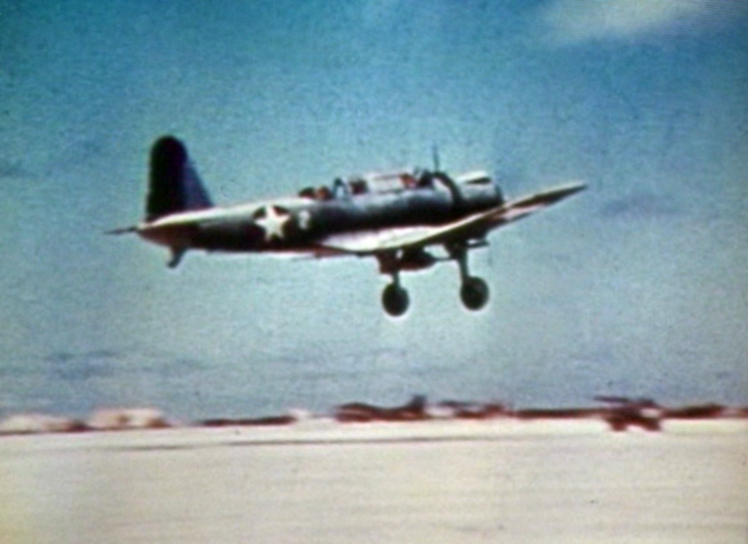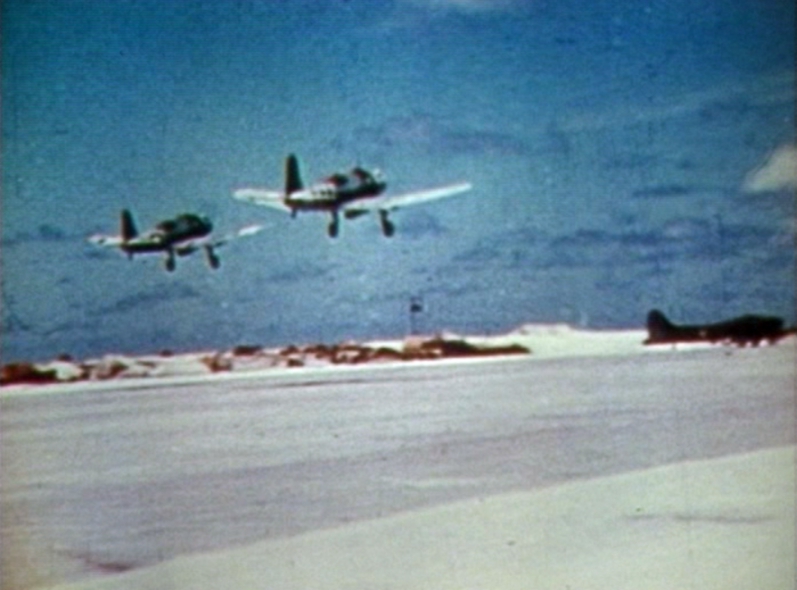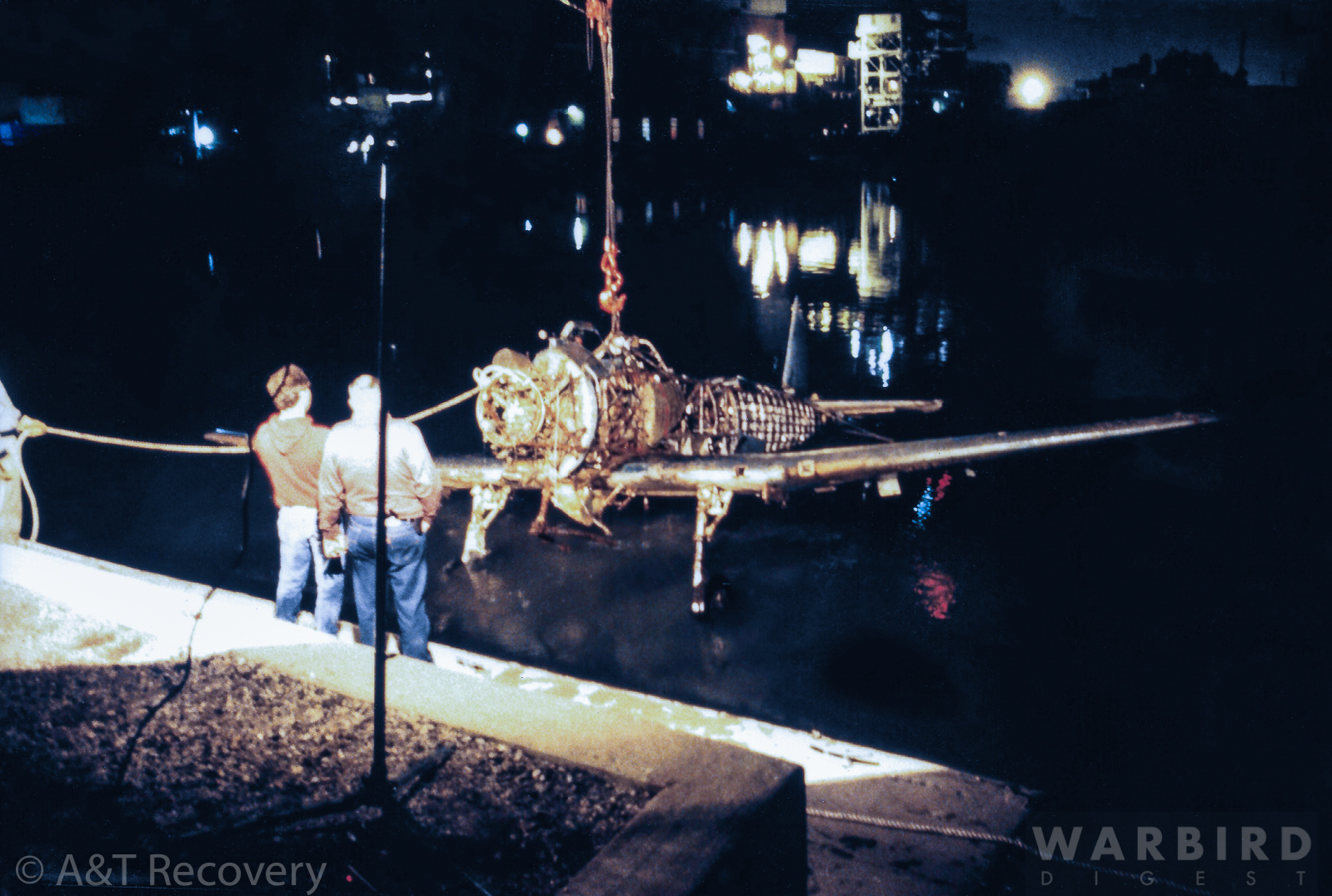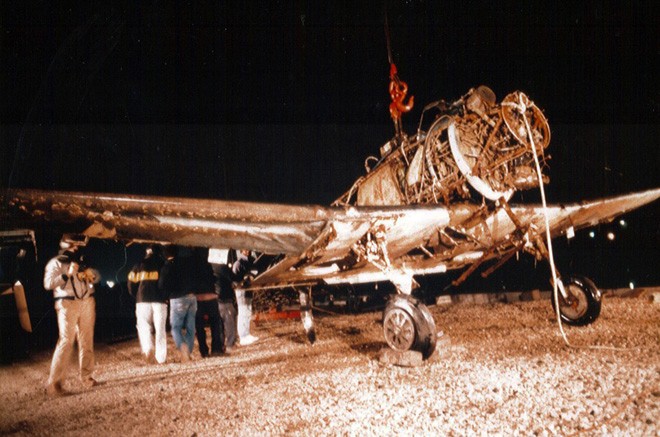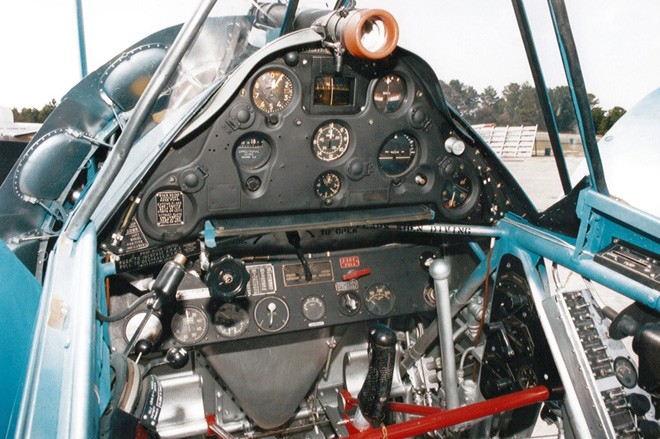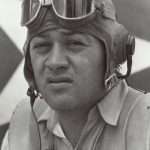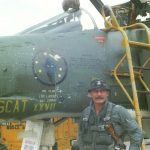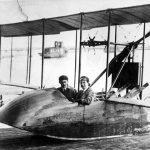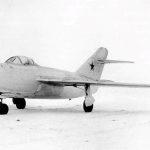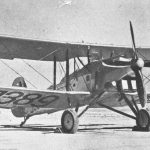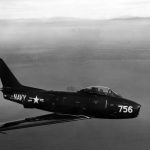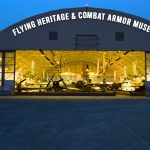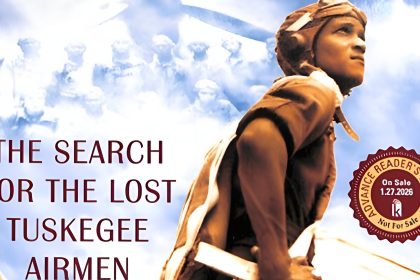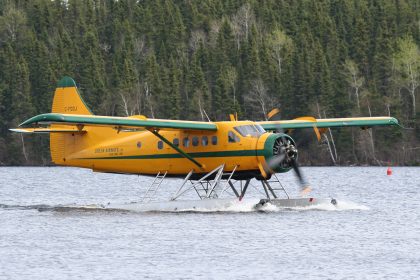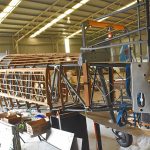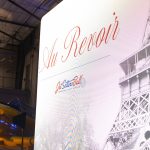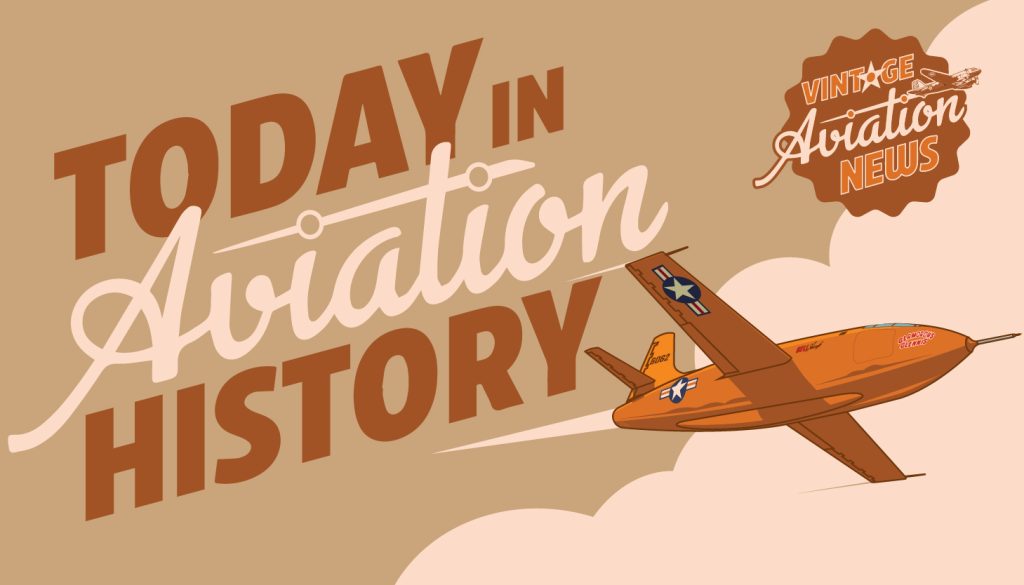
In 1934, the United States Navy issued a requirement for a new carrier borne scout bomber that could double as a dive bomber. The specification accepted entries for both monoplane and biplane designs, and no less than six companies made the final consideration. Among these was the XSB2U-1 monoplane, offered by the Chance Vought Corporation of East Hartford, Connecticut (later moved to Stratford, CT, by WWII), which also offered the XSB3U-1 biplane, based on the company’s SBU Corsair.
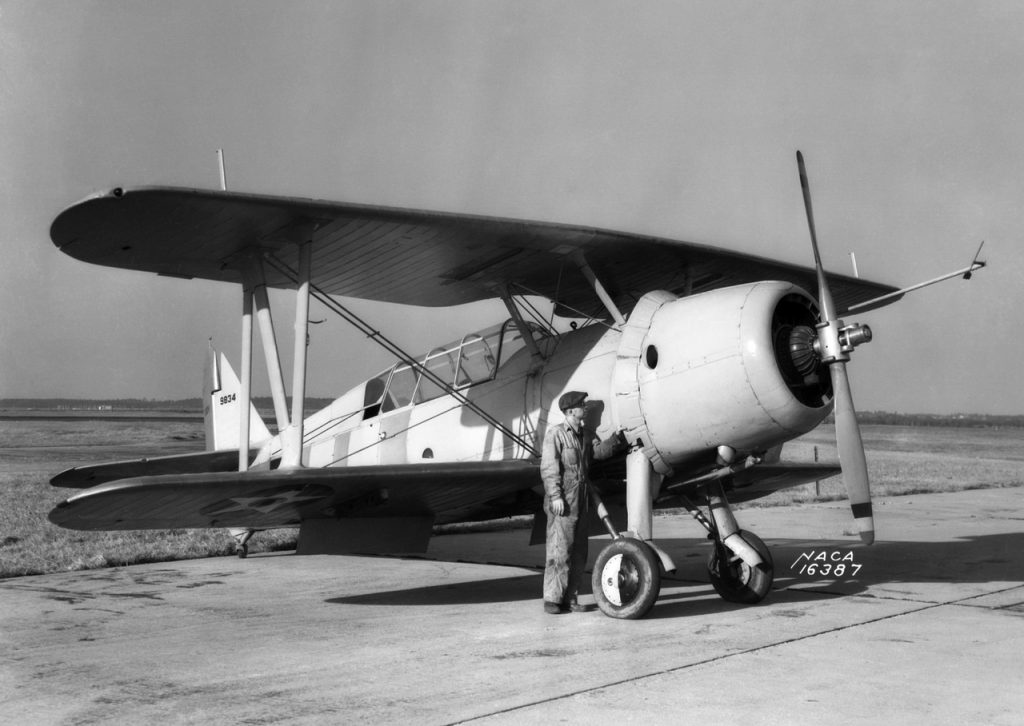
The XSB2U-1, which was flown with the Navy Bureau Number (BuNo) 9725, took its first flight on January 4, 1936. It was designed with a low-wing monoplane configuration with a retractable main landing gear and fixed tailwheel. The two-man crew consisted of a pilot and rear gunner/radio operator housed in a greenhouse-style canopy. The fuselage was built of a more traditional tubular steel framework, with aluminum panels for the engine cowling and the cockpit section and a fabric-covered tail section. The cantilever wings were also of mixed construction, with aluminum paneled leading edges and fabric trailing edges, but also featured folding mechanisms that had the wings fold upwards past the inboard sections. The SB2U was powered by a 750 hp Pratt & Whitney R-1535 Twin-Wasp Junior radial engine, (with production models producing up to 825 hp), that drove a two-blade constant-speed propeller. In April 1936, BuNo 9725 was delivered to Naval Air Station (NAS) Anacostia, near Washington, D.C., for further flight testing. However, this particular aircraft’s life was short-lived, for it would be destroyed during an accident on August 20, 1936, but not before favorable performance in the flight testing up to that point. A production order for 54 SB2U-1s was issued by the US Navy on October 26, 1936, later followed by a similar-size order for the improved SB2U-2 issued on October 6, 1938.
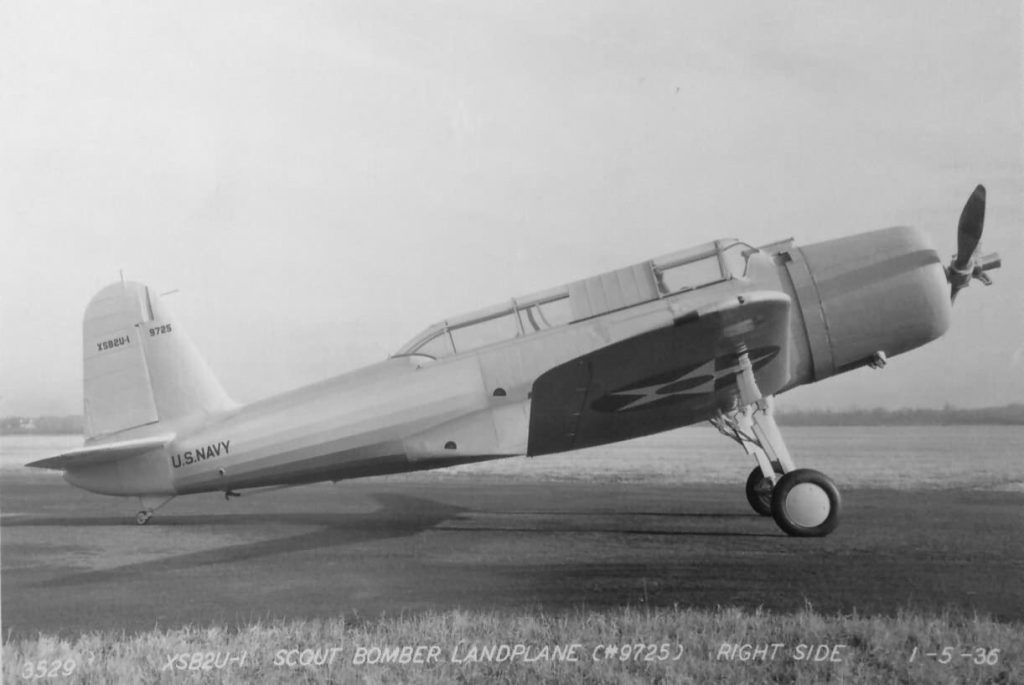
In competition with the XSB2U and XSB3U were the Brewster XSBA-1, Curtiss XSBC-3, Great Lakes XB2G-1, Grumman XSBF-1, and Northrop XBT-1. While the Grumman and Great Lakes designs were ultimately rejected, the remaining designs would also go into production and serve alongside the SB2U-1, with the Brewster SBA-1 being built largely by the Naval Aircraft Factory (NAF) due to Brewster focusing on producing the F2A Buffalo fighter, while the Curtiss SBC Helldiver became the last biplane scout/dive bomber to fly with the USN, and the Northrop BT-1, built when Northrop was a subsidiary of the Douglas Aircraft Company, would directly lead to the development of the Douglas SBD Dauntless.
Meanwhile, the Vought SB2U carried on in service, being armed with a single forward-firing 0.30 caliber (7.62mm) Browning machine gun and a similar gun on a flexible mount for the rear gunner. It’s heaviest ordinance, though, consisted of a single 1,000 lb. or 500 lb. bomb slung under the fuselage with a flexible arm to swing the bomb away from the arc of the propeller, and two wing-mounted 100 lb. bombs or eight 30 lb. bombs. In December 1937, the first SB2Us began their fleet service aboard USS Saratoga (CV-3), followed by the carriers USS Lexington (CV-2), USS Ranger (CV-4), and USS Wasp (CV-7).
1939 would see the introduction of the SB2U-3 variant, which added larger fuel tanks for extended range, and was also tested as a floatplane in addition to being a carrier and land-based wheeled aircraft. The new variant also led to the SB2U being named the Vindicator. With the adoption of the contemporary SBD Dauntless among USN squadrons, the SB2U-3 was largely flown by USMC squadrons based at naval air stations. But soon, other nations expressed interest in the US Navy’s SB2U.
With the threat of war looming in Europe, Vought sent an SB2U-2 demonstrator to Paris in October 1938 to be demonstrated before French officials. On February 22, 1939, Vought received an order for 20 aircraft to equip the Aéronautique Navale (French Naval Aviation) carrier Béarn and the planned Joffre-class aircraft carriers. Three months later, in May 1939, the French doubled their order for another 20 airframes, which were designated V-156-F (F for France). The V-156-Fs were similar to the SB2U-2 but differed from their American cousins in having metric instruments, French Darne 7.5mm machine guns and radios, wing-mounted fence-like dive brakes, and the throttle was reversed so that the full power setting was at the rearmost position. After their construction in Connecticut, the V-156-Fs were disassembled and shipped to France, landing at the French port of Orly, with the first of these reassembled aircraft flying in France on August 6, 1939. With the French declaration of war on Germany on September 3, 1939, the French Navy deemed that its only operational carrier, the 1920s-era Béarn, was obsolete against the new German air and naval forces and later diverted to Martinique in the French West Indies, but not before its complement of V-156-Fs was disembarked for land-based service. For the rest of 1939 the French Voughts patrolled the English Channel and the Atlantic for German surface vessels and submarines with Escadrille AB1 and Escadrille AB3.
During the German invasion of France, the first aerial combat seen by the Vought V-156-F occurred on May 20, 1940, when the aircraft of AB1 were ordered to bomb the bridges on the canals near the Oise River, in order to slow down the German armored units. During the attack, five V-156-Fs were shot down by Messerschmitt Bf 109Es. V-156-Fs were also called upon to provide air cover to the evacuations at Dunkirk and continued the fight not only against the Germans but also against the Italians when they invaded southern France. By the surrender of France, however, only a handful of the Vought dive bombers were in operational condition, and these were soon retired.
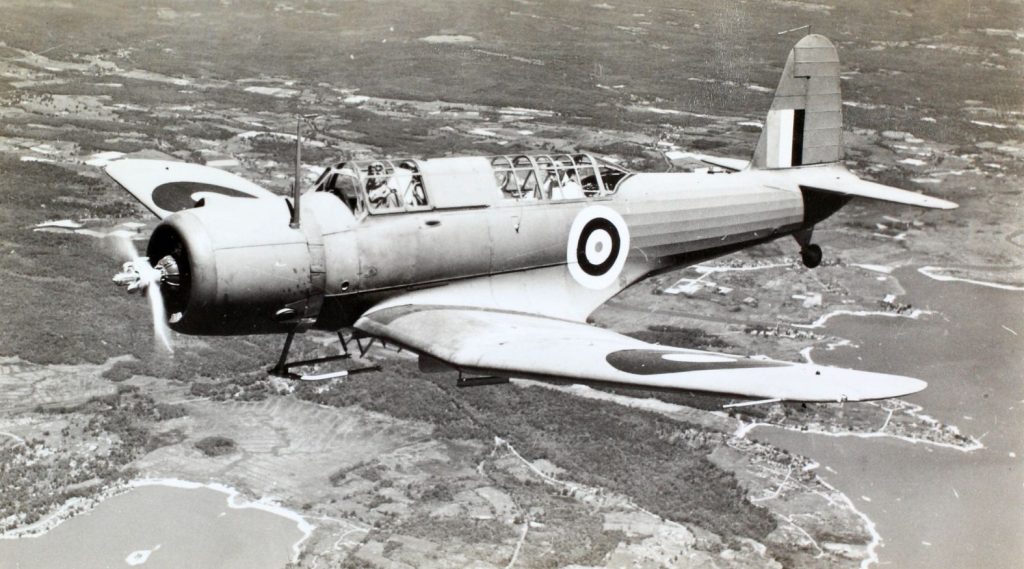
France was not the only European power to fly the Vindicator, for with the fall of France occurring before another shipment of 50 dive bombers could arrive from America, the Royal Navy’s Fleet Air Arm (FAA) took delivery of these aircraft. Redesignated as the V-156-B1, the British named their aircraft the Chesapeake, which had the throttle control reset to standard US-UK practice (forward to increase power), the armament was increased to four .30 caliber machine guns in the wings, and additional fuel tanks, and the wing-mounted fence-type brakes were deleted. The first Chesapeake flew on February 26, 1941, but it was found that the aircraft lacked sufficient power and carrying capacity for the operations expected on escort carriers meant to protect Atlantic convoys. Only No.811 Squadron, earmarked for the escort carrier HMS Archer, flew the Vought Chesapeake in operational service while flying from RNAS Lee-on-Solent. With the aircraft’s overall poor performance, however, No.811 transitioned to the Fairey Swordfish Mk.II biplane in November 1941 before going on sea-duty. The remaining Chesapeakes were relegated to secondary roles within the FAA, such as night-fighter training and target-towing until March 1944.
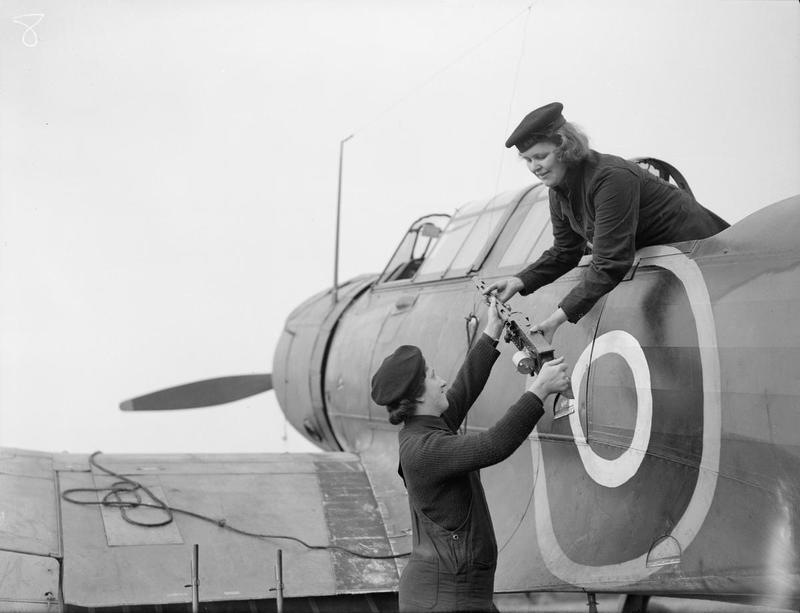
Returning to the US Navy and Marine Corps, SB2U Vindicators were flown on Neutrality Patrols off the US coast to spot any potential violators of that neutrality, while flying from carriers and naval air stations. In December 1941, the USS Lexington (CV-2) was delivering Marine aircraft, including SB2U-3s of Marine Scout-Bombing Squadron 231 (VMSB-231), to Midway Atoll when it received word of the Japanese attack on Pearl Harbor. On Oahu, just southwest of Pearl Harbor, Japanese fighters and dive bombers attacked Ewa Field, destroying seven Vindicators left behind at Ewa as part of a rear echelon force. In March 1942, another squadron, Marine Scout-Bombing Squadron 241 (VMSB-241) was split off from -231, which was officially transferred back to Ewa, but with the majority of its men and aircraft remaining with VMSB-241 on Midway, where one of the most climatic battles of WWII would be waged.
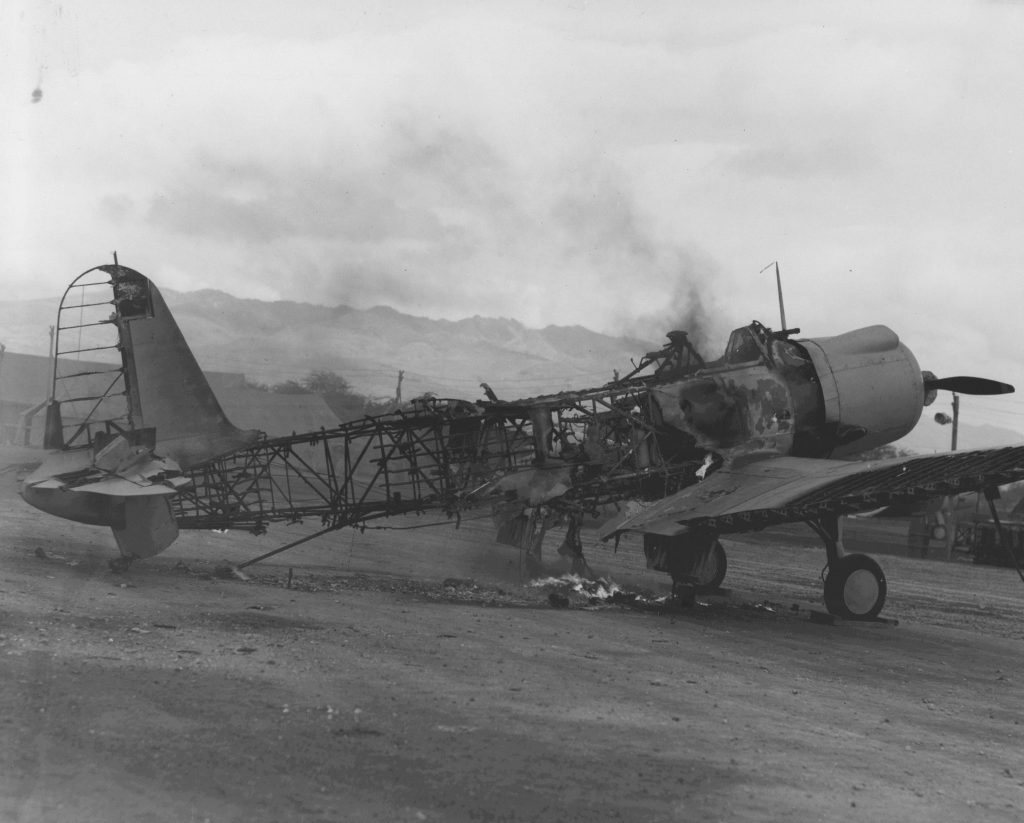
The Marine Vindicator pilots and gunners were aware that their aircraft were outmoded, but they would defend the atoll with their lives. During the attack they took off, being filmed in color by Hollywood director John Ford on Sand Island. On June 4, the Vindicators and SBD-2 Dauntlesses of VMSB-241 joined US Navy Grumman TBF Avenger torpedo bombers and Army Air Force Martin B-26 Marauders launched an attack against the Japanese carrier fleet situated 180 nautical miles northwest of Midway. During the attack, the Marine squadron suffered heavy losses, including their commanding officer, Major Lofton Henderson (namesake of Henderson Field on the island of Guadalcanal). After Henderson’s death, command of VMSB-241 taken over by Captain Richard E. Fleming, flying an SB2U-3. After the main Japanese carrier fleet was crippled, a burning carrier was reported at 1700 hours, leading six Dauntlesses and five Vindicators from Midway to take off at 1900 hours, but were unable to find the reported carrier, with the aircraft returning to Midway by the light of oil fires and anti-aircraft searchlights pointed up as beacons.
On June 5, 1942, Captain Fleming led the second division of VMSB-241 in a bombing against the Japanese cruiser Mikuma. During his glide approach, Fleming’s Vindicator was hit by anti-aircraft fire and set on fire. Despite this, Fleming pressed on his attack, releasing his bomb at five hundred feet, scoring a near miss against the hull of the Mikuma before crashing into the sea. For his heroic actions, Captain Richard Fleming was posthumously awarded the Medal of Honor, while his rear gunner, PFC George Albert Toms posthumously earned the Distinguished Flying Cross.
During the battle fought between June 4-6, 1942, VMSB-241 lost 22 airmen killed in action and 14 wounded, along with 23 of its complement of 30 aircraft. The Battle of Midway would be the end of the Vought Vindicator’s brief combat career, and the surviving aircraft were relegated stateside to become training aircraft, where the last examples in service were later scrapped after they had become too worn out to continue flying. For nearly 50 years, there was no surviving example of a Vought SB2U Vindicator preserved in any museums, until 1990.
That year, A&T Recovery had been contracted by the National Naval Aviation Museum in Pensacola, Florida, to recover airplanes that had gone down in the deep freshwaters of Lake Michigan on training missions during WWII. There, they pulled the remains of a Vought Vindicator, which had been submerged since 1943. Research showed it to be SB2U-2 Bureau Number (BuNo) 1383, which had been the last -2 variant delivered to the US Navy. It was flown from the carriers USS Ranger (CV-4) and USS Wasp (CV-7) on Neutrality Patrols between 1939 and 1941 before being assigned to Bombing Squadron 9 (VB-9), which was to be deployed to the new USS Essex (CV-9). While the aircrews completed their carrier qualifications in BuNo 1383 and its fellow Vindicators aboard the escort carrier USS Charger (CVE-30), the squadron was re-equipped with Dauntlesses prior to their deployment aboard the Essex.
With that, BuNo 1383 was transferred to the Carrier Qualification Training Unit (CQTU) at Naval Air Station (NAS) Glenview, Illinois, and was lost during a training accident on June 21, 1943, while attempting to land aboard the training carrier USS Wolverine (IX-64) under the helm of Second Lieutenant A.W. Lemmons, USMC. While Lt. Lemmons survived to fly again, the Vindicator sank to the bottom of Lake Michigan, where it remained undisturbed until it was recovered by A&T Recovery, and from there it was shipped to the National Naval Aviation Museum in Pensacola, Florida for a complete restoration. After 20,000 hours or restoration, SB2U-2 BuNo 1383 was placed on display inside the museum in 1999, where it remains today, the last of the Vindicators.

While the Vindicator may have found itself to be under-armed and underpowered by the time it was called to combat, the Vindicator had been a design that was introduced when it was not uncommon for a new aircraft to be rendered obsolete in just a few short years due to rapid technological advancements, and the lessons learned from the Vindicator would have an impact on the development of later dive bombers flown by the US Navy.
Today in Aviation History is a series highlighting the achievements, innovations, and milestones that have shaped the skies. All the previous anniversaries are available HERE







